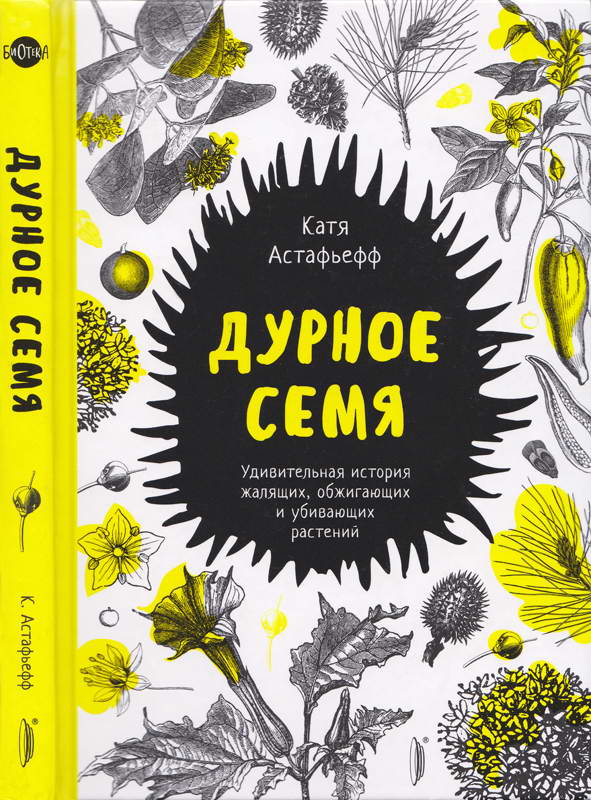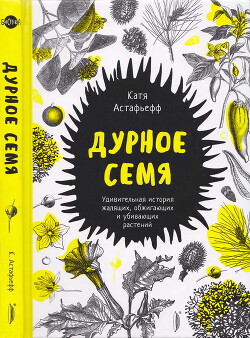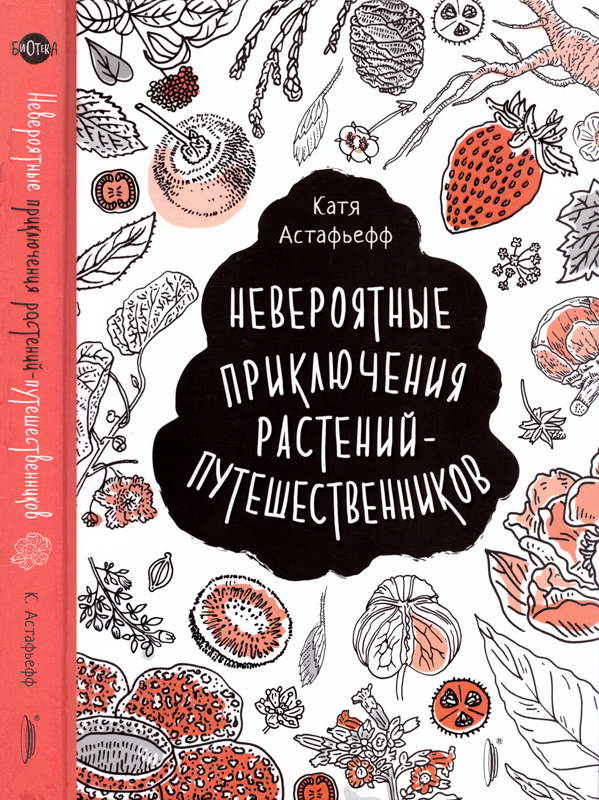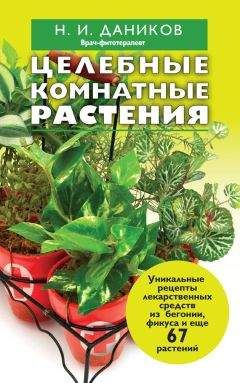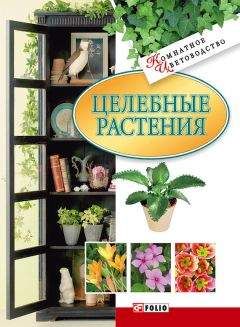растительности. Человечеству еще столько всего предстоит узнать.
Я надеюсь, что эта книга позволила вам по-новому взглянуть на растения. Если вы узнали что-то новое об их происхождении и применении и они стали вам понятнее, вы уже не будете смотреть на растения прежними глазами и еще сильнее полюбите их.
Основная литература
Научные труды
Albouy V. Étonnants envahisseurs. Ces espèces venues d’ailleurs. Quae, 2017.
Bourdu R. L’if. Actes Sud, 1999.
Dauncey E., Larsson S. Les plantes qui tuent: Les végétaux les plus toxiques du monde et Ieurs stratégies de défense, Ulmer, 2019.
Delaveau P. Plantes agressives et poisons végétaux. Horizons de France, 1974.
Faux F. Coca! Une enquête dans les Andes. Actes Sud, 2015.
Hallé F. (dir.). Aux origines des plantes. Fayard, 2008.
Mendes Ferrão J. E. Le voyage des plantes et les grandes découvertes. Michel Chandeigne, 2015.
Muller S. Plant invasives en France. Muséum national d’Histoire naturelle, 2004.
Schall S. Chanvre et cannabis. Plume de carotte, 2012.
Stewart A. Wicked plants. The weed that killed Lincoln’s mother and other botanicalatrocities. Alonquin books, 2009. См. также на русском языке: Эми Стюарт. Коварные растения. Белена, дурман, аконит, мандрагора и другие преступники мира флоры. М.: Альпина Паблишер, 2021. — 220 с.
Thinard F. Le grand bysiness des plantes. Plume de carotte, 2015.
Williams C. Medicinal Plants In Australia. Volume 3: Plants, Potions and Poisons. Rosenberg Publishing, 2012.
Статьи
Gibernau М., Quilichini A. La pollinisation des Aracées. https://www.jardinsdefrance.org/la-pollinisation-des-araceesdes-histoires-damour.
Hurley M. The worst kind of pain you can imagine’ — what it’s like to be stung by a stinging 21etree. https://theconversation.com/the-worst-kind-of-pain-you-can-imagine-what-its-like-to-be-stung-by-a-stinging-tree-103220.
Roux J.-C. La culture de la coca, une plante andine d’usage millénaire. In: Mollard É., Walter A. (eds.). Agricultures singulières. Paris: IRD, 305–310. 2008.
Источники по главам
Глава 1. Плакучий сад
[1] https://qi.epfl.ch/question/show/204.
[2] Arens A., Ben-Youssef L., Hayashi S., Smollin C. Esophageal Rupture After Ghost Pepper Ingestion. Journal of Emergency Medicine. 2016. Dec. 51(6):e141-e143; https://actualite.housseniawriting.com/hoax/2016/11/19/hoax-un-piment-rouge-peut-trouer-votre-oesophage/19297.
[3] Boddhula S. K., Boddhula S., Gunasekaran K., et al. An unusual cause of thunderclap headache after eating the hottest pepper in the world. «The Carolina Reape». Case Reports. 2018. 2018: bcr-2017-224085.
[4] Han Y., Li B., Yin T.-T., Xu C., Ombati R., Luo L., et al. Molecular mechanism of the tree shrew’s insensitivity to spiciness. PLoS Biol. 2018. 16 (7): е2004921.
[5] Chopan М., Littenberg B. The Association of Hot Red Chili Pepper Consumption and Mortality: A Large Population-Based Cohort Study. PLoS One. 2017.12(1): e0169876.
[6] Lv J., Qi L., Yu C., Yang L., Guo Y., Chen Y. et al. Consumption of spicy foods and total and cause specific mortality: population based cohort study. BMJ. 2015. 351:h3942.
[7] https://www.revmed.ch/revue-medicale-suisse/2008/revue-medicale-suisse-162/prise-en-charge-medicamenteuse-de-la-douleurneuropathique-quelle-place-pour-les-traitements-topiques; https://www.pharmasante.org/autres-cremes-anesthesiantes; Van Rijswijk J. B., Boeke E. L., Keizer J. М., Mulder P. G., Blom H. М., Fokkens W. J. Intranasal capsaicin reduces nasal hyperreactivity in idiopathic rhinitis: a double-blind randomized application regimen study. Allergy. 2003. Aug. 58(8):754–61; https://www.cochrane.org/fr/CD004460/capsaicine-pour-la-rhinite-allergique; Fokkens W., Hellings P., Segboer C. Capsaicin for Rhinitis. Curr Allergy Asthma Rep. 2016.16(8):60.
Глава 2. Им нужна наша кожа
[1] New Zealand Plant Conservation Network: http://www.nzpcn.org.nz.
[2] https://www.stuff.co.nz/science/83197300/painful-nativeplant-may-hold-pain-relief-key.
[3] Medicinal Plants in Australia. Vol. 3: Plants, Potions and Poisons. P. 45.
[4] Hurley M. The worst kind of pain you can imagine’ — what it’s like to be stung by a stinging tree. The Conversation. 2018. https://theconversation.com/the-worst-kind-of-pain-you-canimagine-what-its-like-to-be-stung-by-a-stinging-tree-103220.
[5] https://www.australiangeographic.com.au/topics/science-environ-ment/2009/06/gympie-gympie-once-stung-never-forgotten; Medicinal Plants in Australia. Vol. 3: Plants, Potions and Poisons. P. 45.
[6] Schmitt C., Parola P., de Haro L., et al. Painful Sting After Exposure to Dendrocnide sp: Two Case Reports. Wilderness & Environmental Medicine. Vol. 24. Issue 4. 471–473; https://www.wemjournal.org/article/S1080–6032(13)00088-4/fulltext.
[7] https://www.wemjournal.org/article/S1080–6032(13)00088-4/fulltext.
[8] Eloffe A. L’ortie: ses propriétés alimentaires, médicales, agricoles et industrielles, Ch. Albessard et Bérard, 1862.
[9] Hugo V. Les Contemplations. Autrefois, Livre troisième. XXVII. 1856.
[10] Gonzalo Fernandez de Oviedo у Valdes. Natural history of the West Indies. Chapal Hill. University of North Carolina Press. 1959.
[11] Oexmelin A-O. Histoire des aventuriers flibustiers. Frontignières. Chez Benoit et Jopesh Duplain. Père et Fils. 1774.
[12] Strickland N. H. Eating a manchineel «beach apple». BMJ. 2000. 321(7258). 428.
[13] Nouveau dictionnaire d’histoire naturelle appliquée aux arts, à l’agriculture, à l’économie rurale et domestique, à la médecine, etc. 19. Vol. 7. Deterville. 1818.
[14] Darwin E. Les amours des plantes. 1789.
Глава 3. Растения-пришельцы
[1] https://www.independent.co.uk/news/world/americas/giant-hog-weed-burns-Virginia-alex-childress-poisonouseffects-toxic-plant-a8450226.html.
[2] 100 espèces envahissantes parmi les plus néfastes du monde. Une sélection de la globale invasive database: http://www.issg.org/pdf/publi-cations/worst_100/french_100worst.pdf.
Глава 4. Апчхи!
[1] http://wd043.lerelaisinternet.com/pdf/Impact_sanitaire_ambroisie_ARA_2017.pdf.
[2] https:// www.legifrance.gouv.fr/affichTexte.do?cidTexte=JORF-TEXT000034S03018&categorieLien=id.
[3] Lake Iain. Climate Change and Future Pollen Allergy in Europe. Environmental Health Perspectives. 125.10.1289/EHP173. 2016.
[4] https://www.eaaci.org/outreach.html
[5] https://www.bfmtv.com/sante/paris-et-les-grandes-villes-cauchemar-pour-les-allergiques-au-pollen_AN-201706070090.html.
[6] Fukuda K. et al. Prevention of allergic conjunctivitis in mice by a rice-based edible vaccine containing modified Japanese cedar pollen allergens. Br I Ophthalmol. 2015. May. 99(5):705–9; https://japantoday.com/category/features/health/genetically-altered-rice-could-solve-japans-pollen-allergy-problem.
[7] https://www.pasteur.fr/fr/search/allergies%20%3A%201a%20reactivite%20croisee%20entre%201e%20pollen%20de%20cypres%20et%201es%20peches%5Cagrumes%20enfin%20expliquee.
[8] https://link.springer.com/article/10.1007/s10453-006–9023-1.
[9] Song J.-K. et al. Climate Change Influences the Japanese Cedar (Cryptomeria japonica) Pollen Count and Sensitization Rate in South Korea. bioRxiv 340398, 2018.
[10] Grégori M. et al. Pollin’air: un reseau de citoyens au service des personnes allergiques. Revue Franchise dAllergologie.Vol. 59. Issue 8. December.
